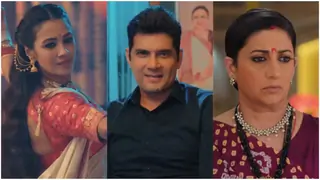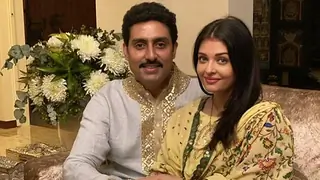-----------------------------------------------
The Adbhuta Ramayana, literally, the amazing Ramayana', or the Ramayana of wonders/ of the amazing One', is a large collection of verses, composed in Sanskrit, which falls into two main parts. These contain somewhat uneven combinations of narrative and philosophical material which don't always seem to fit together very well. Because of this, Thomas Coburn, the American scholar who translated our extract above, suggests the Adbhuta is better understood as an aggregated folk tradition than as a polished literary text (1995: 5).
It certainly draws on folk motifs and the story of the killing of the second Ravana which were found, initially, it seems, in Tamil traditions from southeast India.
They were also taken up or circulated in vernacular language traditions in eastern India, in Orissa (15th c. AD), and then in Assam and Bengal. The areas of red on this map of India indicate the regions where the story of the second Ravana circulated in folk traditions.
Like many Sanskrit sources, the Adbhuta is very difficult to date accurately. Coburn suggests the late sixteenth century as a possibility. This is because scholars date it later than two philosophically orientated Sanskrit Ramayana tellings from around the 12th/13th century and 16th century respectively, the latter of which may be associated with the Ramanandi devotional tradition. So, we have earlier tellings linked with interweaving Sanskrit and folk traditions, particular devotional groups and philosophical schools. What of our Adbhuta?
The Adbhuta Ramayana presents itself as one of two Ramayanas told by the sage Valmiki. The first is Valmiki's Sanskrit Ramayana as we now have it, often regarded as one of, if not the, most authoritative. But this, says our text, is but a fraction of the longer divine Ramayana of which itself is a part. The text's amazing' stance is thus firmly rooted in authority beyond this world. Historically, however, it is linked with a Shakta standpoint, presenting the Goddess as the amazing One, the source of all wonders. For in Shakta traditions, Shakti, the divine power of the Goddess, is worshipped as the ultimate reality in Her own right (although Shiva, as her consort, often remains in the frame). It is a version of this which shapes the Adbhuta Ramayana's understanding of Sita.
The text frames this understanding with a long and complicated account of Sita's origins. In this telling she is the daughter of Ravana's wife, Mandodari. Mandodari wants to end her miserable life and drinks from a pitcher Ravana has given her, believing it to be full of poison. But the pitcher contains both milk and drops of blood.
The milk had been used as an offering by a childless woman to invoke the goddess of wealth and beauty, Lakshmi, hoping she would have a daughter like her (8.29). The drops of blood were gathered by Ravana from the sages in the Dandaka forest so he could conquer the whole world (8.17). Together these impregnate Mandodari with Ravana's child, but she is afraid he will accuse her of unfaithfulness, since he has not been near her for a year (8.31-32), a nice double of the normative story where it is Sita who has to prove her fidelity. To avoid Ravana, Mandodari goes off on a pilgrimage to Kurukshetra in north India, aborts the embryo and buries it in the ground (8.33-34). Sita is thus conceived as Ravana's daughter but emerges from the ground when king Janaka clears it with a golden plough to perform a sacrifice there (8.37-38). King Janaka brings her up, hence her name Janaki (daughter of Janaka). The audience knows she is also really a manifestation of Lakshmi, consort of Vishnu (because of Lakshmi's power in the milk). And yet she is more than this.
In our part of the text, the gods, led by Brahma, address her to remind her of her true identity in order to stop her trampling on Shiva and destroying the whole earth. It is thus that we find out that she is Maheshvari Shakti, the Power of the universe, none other than the Great Goddess herself (24.3-4). Although we see her in action as Sita/Kali fighting the thousand-headed Ravana, in her own nature She is the highest Shakti, the foundation of Shiva, infinite, imperishable, the One (ekam) (25.5). This is a clear indication that She is the ultimate, the equivalent to brahman in Advaitin traditions. The gods indeed acknowledge her highest nature, yet remind her that it is she who manifests as the beloved wife of Rama, remaining untainted by her two appearances (as Sita and as Kali) whose source is the light which is innate to her (24.4).
This seems to be a reference to the threefold understanding of reality which Bengali tantric texts shared with Kashmiri Trika texts. Its first aspect (1) is the transcendent (par), its second (2) the transcendent as well as the material (parpar), and its third (3) the material (apar) alone. Whereas the first is beyond all distinctions of language and form, in the second the goddess becomes aware of polarity which inaugurates the next phrase of creation or manifestation (Gupta: 2000: 464); this in turn results in the third. The Adbhuta specifically mentions that it is in her parpar form that the Goddess, as Vaishnavi Shakti, plays' in intense fury in battle, as the gods seek to calm her down (24.5).
As well as being called Maheshvari Shakti (the power of Maheshvara, that is, Shiva), why then is Sita also identified as the one Vaishnavi Shakti (or power of Vishnu)? At one level, this may seem obvious. In the Adbhuta, Lakshmi's ritual presence in the milk helps Mandodari conceive Sita. And in many other texts, Sita and Rama are said to be descent forms of the deities, Lakshmi and Vishnu, who come to restore dharma. Indeed in many Ramayanas, Sita is said to be born for precisely this reason - kidnapped, she becomes the pretext on which Rama can fight Ravana and thus rid the earth of his oppression. Yet in Bengali and other Shakta texts, as here, something further is going on. The Goddess herself claims identity as Vaishnavi Shakti, taking over Vishnu's role as the one who rescues the earth. That she is identified in this way here, where she is actually endangering the earth, is not merely incidental. It makes the audience wonder whether her destruction is actually restorative. Moreover, the gods remind her that it is through her that the Lord, the magician and wielder of maya (mayavin), the Supreme Being (puruottama), can act. All these terms remind us of Vishnu in the Bhagavad Gita, who uses his marvellous power (maya) to intervene as Krishna when dharma is in decline, yet remains the source of all there is.
Now here it is the Goddess who is the eternal power, comprising illusion (maya), which contains all forms (24.11). Indeed, She offers to give Rama a divine eye' so that he can see her real form, her infinite greatness (25.7), just as Krishna in the Gita offered to give Arjuna a divine eye to see his universal form as Vishnu (BhG 11).
Yet, She is superior even to Vishnu, as She is superior even to Shiva, and to the impersonal brahman. At a cosmic level, Shiva is unable to act without Her; in the Adbhuta story, Rama is similarly impotent. She, though, is not simply Rama's wife (3), but the female power of illusion which enables the male Supreme Lord to act (2), and that ultimate reality which transcends them both (1).
This understanding of the Goddess as the transcendent ultimate reality which grounds all provides one of the sources for the wonderful poetry which is attributed to her eighteenth century Bengali devotee, Ramprasad. His poetry in turn influenced the famous 19th century figure, Ramakrishna. You might want to investigate what other sources Ramprasad's poems draw on to see how Tantric and folk elements become intertwined (McLean 1998).
In his poem below, where there is no suggestion of a link to the Ramkatha, what does this black woman' (Kali) have in common with Sita's fierce manifestion in the Adbhuta and what if anything is different or surprises you? Why might the earlier Abhuta have superimposed the story of the Goddess onto that of Sita?
That black woman
full of virtue
stands playfully on Kama's Killer [Shiva].
What is She
goddess, demon, elephant, serpent, woman?
The pearl hanging from Her nose
like a cakora bird
in the lap of the full moon
swings back and forth.
She smiles gently.
Now what's She doing?
Catching elephants on a battlefield
with Her hands?
She's only a naked thin sixteen-year-old!
Her face is prettier than a blue lotus;
Her sweet smile flashes lightning.
As yet undeveloped
Her budding breasts are bashful, and a slivered moon
illumines Her forehead.
How seductive! How beautiful! My heart throbs.
The sweetheart is young and well-behaved, with graceful
movements
and a gorgeous figure.
Demon throngs thrust themselves into the furious waves of
battle.
Who is this, crushing my sorrows, breaking my pride?
She Who Destroys Everything.
Servant Ramprasad says:
Remover of deep dense darkness,
the black, long-haired Goddess always dwells in my heart-lotus.
Victorious in this life and the next, I spit on Time.
My words are extreme
but for me
death is stilled.
I have entered God.
Ramprasad Sen, Syama bama gunadhama (in McDermott 2000: 174-5)
Sarga 23: Seeing Rama unconscious and helpless on the field, Sita laughed, and giving up her human appearance she took on the exceedingly horrific form of Mahakali. In less than a second, she severed Ravana's 1000 heads and began destroying rakshasas everywhere. Innumerable mothers of every type came to the battlefield to sport with Mahakali, playing games with the heads of rakshasas. The earth shook and almost sank into the netherworlds, but was rescued by Shiva disguised as a corpse.
Sarga 24: Realizing that the earth might be destroyed if Sita as Mahakali did not calm down, the Devatas came to appease her. They exclaimed that only through shakti does the supreme lord become accessible. She pointed to the unconscious Rama, making clear that because he was unconscious she could not consider the world's welfare. Brahma restored Rama's consciousness, but as he regained awareness he was frightened of Sita's horrific form. Brahma explained to Rama that she had taken this form to highlight the fact that everything he does"the creation and destruction of the universe, and all other activities"can only be accomplished in association with her, with shakti. Rama was satisfied, and his fears allayed.
Sarga 25: Brahma assured Rama that the horrific form before him was indeed Sita, and so he asked her who she really was. She explained that she was the entity within everyone, known as Shiva (with a long a, the shakti of Lord Shiva), who can take one across the ocean of sansara. She then gave Rama "celestial sight" so that he could perceive her divine state. Seeing her true nature, he was thrilled, and praised her by reciting her 1008 names.
Sarga 26: Rama continued to praise her, and at his request she reverted to her form as Sita. They then prepared to return to Ayodhya.
Sarga 27: Rama and Sita mounted the car known as pushpaka, and soon arrived in Ayodhya. Once there, he narrated the story of the elder Ravana's defeat to everyone. They then bade farewell to Sugriva and his army of monkeys as well as to Vibhishana and his army of rakshasas. The sarga concludes with a brief re-counting of Rama's story and an ennumeration of the merits and benefits of hearing the story of the Adbhuta Ramayana
------------------------------------------------------------------------------------------------




















